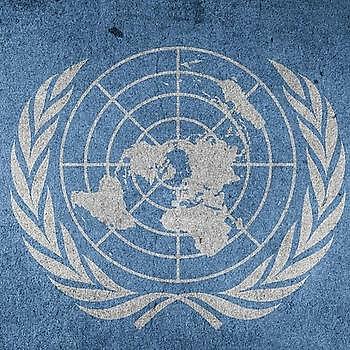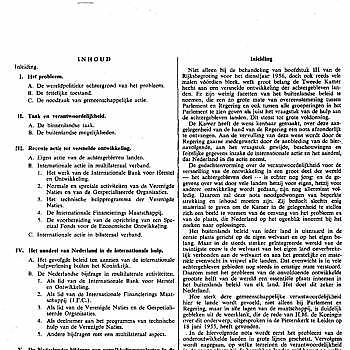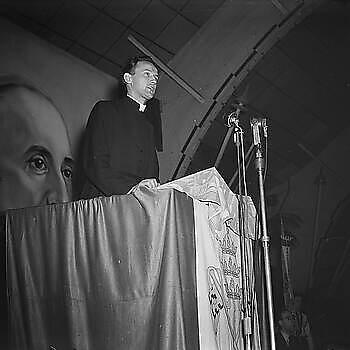The interest in development cooperation increased in the Netherlands in the 1950s. The first congress on development aid was organized by the ‘Allience of Scientific Researchers’ (Verbond van Wetenschappelijke Onderzoekers) en the Withall in 1950. The ‘Dutch Youth Community’ (de Nederlandse Jeugdgemeenschap” organized the first fundraising campaign "Help India" a year later. Futhermore, the Novib was founded.
The business sector also saw the benefits of Dutch efforts, and bilateral aid – aid from government to government – grew compared to multilateral aid – aid given through international organizations such as the World Bank – and focused on the Dutch export industry. Dutch aid was "tied": it had to be spent on Dutch companies. From the late 1950s, some of the Dutch development aid also flowed through Europe. In the 1960s, co-financing began: government aid was partially spent through private organizations. This was done through the Dutch pillar system: Catholic (Vastenactie, Cebemo, later Cordaid), Protestant (ICCO), "general" (Novib, later Oxfam Novib), and humanistic (Hivos).
The government was motivated to take action by various events, including the speech of Queen Juliana in the Pieterskerk in Leiden, the Plein speeches of Father Jelsma, and some MPs such as PvdA'er Ruygers. The employers' associations also urged the government to promote bilateral initiatives and argued that the business community should be more involved, especially for the benefit of export.
The Dutch government's policy in this period was strongly influenced by the discussion between the Ministry of Economic Affairs, de facto the Directorate-General for Foreign Economic Relations, and the International Organizations Directorate of the Ministry of Foreign Affairs regarding the weighting of Dutch economic and trade interests in participation in aid programs. In 1960, an interdepartmental working group was established under the chairmanship of G.E. Ittersum to determine the future course. The final report (1962) favored the provision and expansion of development aid through multilateral structures and formed the basis for the ‘Note on aid to less-developed countries’ (Nota over de hulp aan minder-ontwikkelde landen).
However, by the end of this period, Dutch preference for multilateral aid had already been significantly weakened (see table 2.1 in Coppens (2019, p. 86))
Notes:
- Nota inzake de hulpverlening aan minder ontwikkelde gebieden
- Nota over de hulp aan minder-ontwikkelde landen
Sources:


